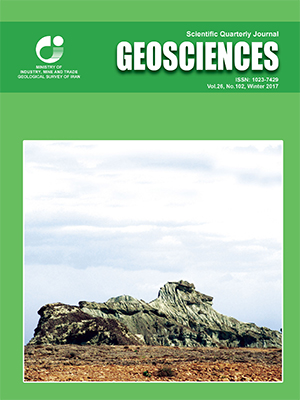Document Type : Original Research Paper
Author
Associate Professor, Department of Geology, Payame Noor University, Tehran, Iran
Abstract
Jeirud phosphate deposit is located about 45 km north of Tehran, in the central part of the Alborz geological-structural zone. This deposit is occurred in Jeirud Formation, which is one of the major hosts of phosphate deposits in Iran. Jeirud phosphate deposit is composed of several phosphatic sandstone (phosphorite) layers occurring in the laminated black shale unit of Jeirud Formation. Based on the petrographic studies, phosphatic layers of Jeirud formation have simple mineralogy. Phosphate mineralization mainly consists of apatite and quartz with subordinate calcite, dolomite, pyrite, iron oxides and clay minerals. Jeirud phosphate samples show similar REE patterns, total REE contents and element ratios, suggesting contribution of common processes in their formation. Average total REE contents of the Jeirud phosphate samples are much more than those in the average oceanic water. Normalized REE patterns of Jeirud phosphate samples show differentiation and enrichment in LREEs in comparison to HREEs. Ce anomaly was not distinguished in the deposit. Investigating chondrite normalized REE patterns of the Jeirud phosphates indicate their deposition under reducing conditions. Post Archean Average Shale (PAAS) normalized patterns of the Jeirud phosphates show a nearly convex pattern with moderate positive Eu anomaly, revealing an anoxic or (sulfate reducing) diagenetic environment for phosphate formation.
Keywords

